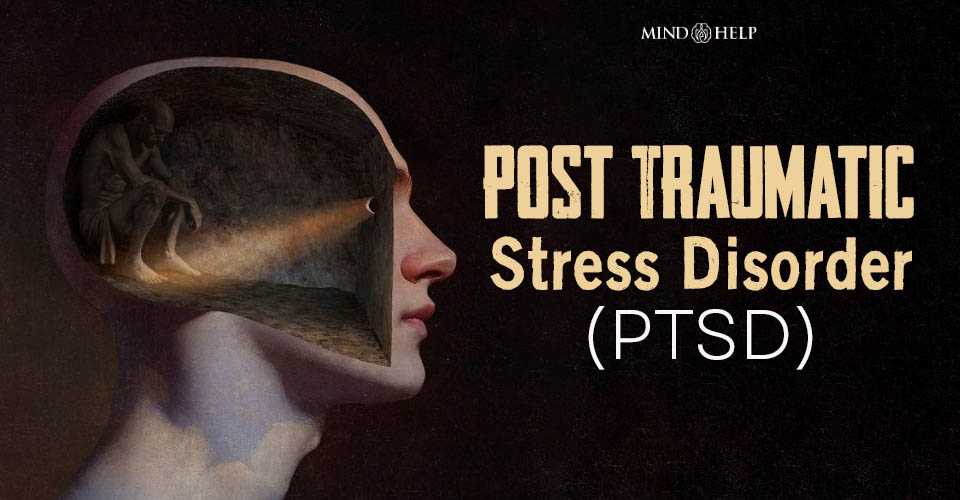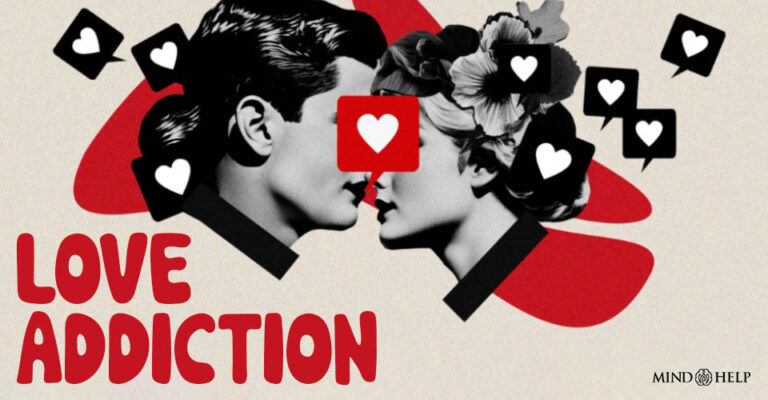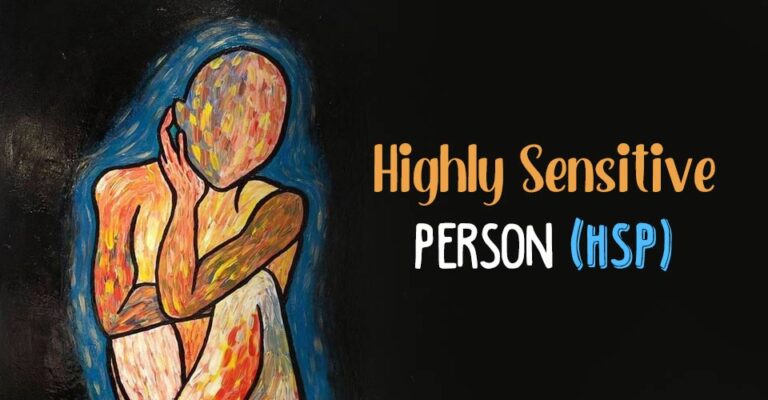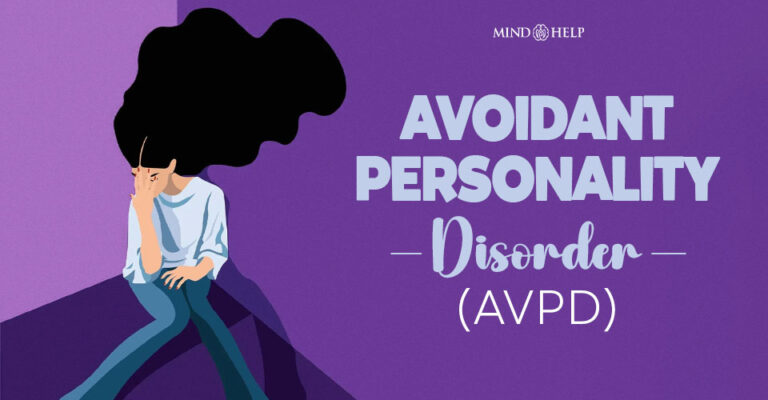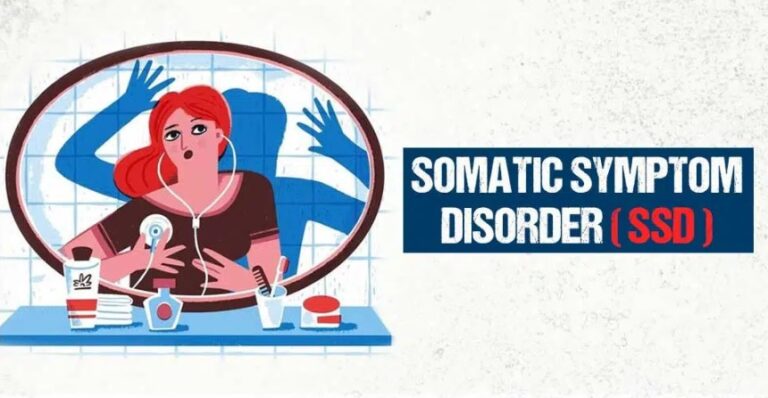Post-Traumatic Stress Disorder (PTSD) is a mental health condition that can develop after a person experiences or witnesses a traumatic event. These events might include war, natural disasters, accidents, physical or sexual assault, or any situation that causes intense fear, helplessness, or horror.
PTSD symptoms usually fall into four categories:
- Intrusive thoughts
Flashbacks, nightmares, or distressing memories of the trauma.
2. Avoidance
Avoiding places, people, conversations, or situations that are reminders of the event.
3. Negative changes in thoughts and mood
Feeling detached, numb, guilty, ashamed, or losing interest in previously enjoyed activities.
4. Hyperarousal and reactivity
Being easily startled, feeling tense or “on edge,” difficulty sleeping, or having angry outbursts.
Who is at Risk?
Anyone who has experienced or witnessed trauma can develop PTSD, but risk factors include:
- Having a history of mental illness
- Lack of support after the trauma
- Experiencing prolonged or repeated trauma
- Childhood abuse or neglect
Can PTSD Be Treated?
Yes. PTSD is treatable, and many people recover with the right support. Common treatments include:
- Cognitive Behavioral Therapy (CBT), especially trauma-focused CBT
- Eye Movement Desensitization and Reprocessing (EMDR)
- Medication such as antidepressants
- Support groups and psychoeducation
Table of Contents
What Is Post-Traumatic Stress Disorder?
Post-traumatic stress disorder is a mental health condition that may develop after one experiences or witnesses a traumatic or shocking event 1 National Institute of Mental Health. (2019, May). Post-Traumatic Stress Disorder. Www.nimh.nih.gov; National Institute of Mental Health. Available from: https://www.nimh.nih.gov/health/topics/post-traumatic-stress-disorder-ptsd .
While it is not unusual for people to get flashbacks, nightmares 2 El-Solh A. A. (2018). Management of nightmares in patients with posttraumatic stress disorder: current perspectives. Nature and science of sleep, 10, 409–420. https://doi.org/10.2147/NSS.S166089 , or intrusive thoughts after traumatic experiences, these symptoms can persist for months if you are suffering from post-traumatic stress disorder.
People suffering from post-traumatic stress disorder may intentionally avoid situations and things that remind them of the trauma as memories of the event cause them intense anxiety which can disrupt their normal functioning 3 Posttraumatic Stress Disorder – an overview | ScienceDirect Topics. (n.d.). Www.sciencedirect.com. Available from: https://www.sciencedirect.com/topics/medicine-and-dentistry/posttraumatic-stress-disorder .
Although PTSD can be quite debilitating, it is possible to recover from it with appropriate treatment and social support.
Case Example – 1
Rajiv had served at the border for five long years. Around six months ago, his life took a devastating turn when he sustained a severe leg injury during combat. The injury not only impaired his ability to walk but also brought an abrupt end to his career in the Defense forces. The experience was more than just physically traumatic—it deeply affected his sense of identity and transformed him emotionally.
Once known for his strength and composure, Rajiv now found himself jumpy and easily startled by loud noises. Unexpected entries into his room left him anxious and on edge. Nightmares of the battlefield haunted his sleep, often jolting him awake in fear, unable to find rest again.
Trying to move on, Rajiv deliberately distanced himself from his past. He cut ties with former colleagues and tucked away every photo of himself in uniform, hoping to erase the painful memories. Yet, despite his efforts, he was plagued by persistent, intrusive thoughts of that fateful day—images and emotions that refused to let go. Over time, his once vibrant spirit faded; he slipped into a low mood and began to lose interest in activities he used to enjoy.
Case Analysis
Rajiv’s symptoms point to significant psychological distress. He exhibits hyperarousal symptoms like being easily startled and disturbed sleep due to recurring nightmares. His deliberate avoidance of reminders—such as avoiding ex-colleagues and hiding photos—along with persistent intrusive thoughts and a decline in mood and interest, are hallmark signs of post-traumatic stress. These behaviors suggest he may be struggling with Post-Traumatic Stress Disorder (PTSD).
These are classic indications of post-traumatic stress disorder.
Case Example – 2
At just 19, Charu had a terrifying experience while traveling alone on a train. She was confronted by two robbers who turned violent when she tried to protect her belongings. Despite her efforts to resist, the men assaulted her and fled with her wallet, leaving her bruised, shaken, and stranded without any money.
Initially, Charu tried to move on. She told herself the worst was over and resumed her daily routine. But about a month later, she woke up in the middle of the night drenched in sweat, gripped by a nightmare in which the two attackers appeared in her room. The fear was so real, she couldn’t sleep again that night. These disturbing dreams became frequent, and soon Charu began experiencing vivid flashbacks of the incident even while awake. She avoided talking about the trauma, hoping it would fade on its own—but it clung to her mind like a shadow.
Charu’s focus in class began to waver, and she found herself zoning out during conversations. Her sense of safety was deeply shaken. The next time she boarded a train, panic set in. It felt as if the assault was happening all over again. Overwhelmed and disoriented, she could no longer tell what was real and what was imagined. Her breathing grew rapid, her head spun, and she had to be helped off the train and rushed to a hospital.
Case Analysis
Charu’s symptoms strongly indicate that she was experiencing Post-Traumatic Stress Disorder (PTSD). About a month after the traumatic incident, she began suffering from recurring nightmares and vivid flashbacks. These intrusive memories disrupted her concentration and affected her ability to function normally. Additionally, environments associated with the trauma—such as being on a train—acted as powerful triggers, causing intense emotional and physical distress.
Post-traumatic Stress Disorder vs Acute Stress Disorder
Acute Stress Disorder (ASD) is an immediate psychological response to trauma, typically occurring within the first few days to weeks following the event. In contrast, Post-Traumatic Stress Disorder (PTSD) is diagnosed only if symptoms persist for more than four weeks. Despite the difference in timing, both disorders share many overlapping symptoms.
Read More About Acute Stress Disorder Here
PTSD vs C-PTSD
Complex post-traumatic stress disorder or C-PTSD is a relatively new classification that is used to describe a stress disorder that develops due to exposure to multiple traumatic events over a long period of time.
Experts over the years have found that repeated, prolonged trauma may result in more severe emotional and psychological damage than a single traumatic event 4 Herman, J.L. Complex PTSD: A syndrome in survivors of prolonged and repeated trauma. J Trauma Stress 5, 377–391 (1992). https://doi.org/10.1007/BF00977235 , leading to the formulation of the C-PTSD diagnosis. Research 5 Bryant R. A. (2019). Post-traumatic stress disorder: a state-of-the-art review of evidence and challenges. World psychiatry : official journal of the World Psychiatric Association (WPA), 18(3), 259–269. https://doi.org/10.1002/wps.20656 reveals that long-term adverse childhood experiences are most likely to result in complex PTSD in adults.
How Common Is PTSD?
According to World Mental Health surveys 6 Koenen, K. C., Ratanatharathorn, A., Ng, L., McLaughlin, K. A., Bromet, E. J., Stein, D. J., Karam, E. G., Meron Ruscio, A., Benjet, C., Scott, K., Atwoli, L., Petukhova, M., Lim, C. C. W., Aguilar-Gaxiola, S., Al-Hamzawi, A., Alonso, J., Bunting, B., Ciutan, M., de Girolamo, G., Degenhardt, L., … Kessler, R. C. (2017). Posttraumatic stress disorder in the World Mental Health Surveys. Psychological medicine, 47(13), 2260–2274. https://doi.org/10.1017/S0033291717000708 , post-traumatic stress disorder possibly affects about 4% of the world population although prevalence rates may vary depending on cultural and ethnic factors.
PTSD often affects rescue workers, emergency personnel, and loved ones of disaster victims. It is also highly common among war veterans 7 National Center for PTSD. (2014). How Common is PTSD in Veterans? Va.gov. Available from: https://www.ptsd.va.gov/understand/common/common_veterans.asp . Women are more likely to be affected by PTSD than men.
Signs Of PTSD
The symptoms of post-traumatic stress disorder occur after being exposed (either directly or indirectly) to a traumatic event. A person who has PTSD will commonly show the following signs 8 Center for Substance Abuse Treatment (US). (2014). Exhibit 1.3-4, DSM-5 Diagnostic Criteria for PTSD. Nih.gov; Substance Abuse and Mental Health Services Administration (US). Available from: https://www.ncbi.nlm.nih.gov/books/NBK207191/box/part1_ch3.box16/ :
- Unwanted but recurring memories of the event
- Nightmares related to the event
- Feeling as if the traumatic event was occurring again
- Intense reactions to things related to the traumatic event
- An attempt to suppress memories of the event and avoid situations that remind them of the same
- Inability to remember certain aspects of the event
- Low mood and a negative view of their own self and the world
- Lack of interest in activities they liked before
- Outbursts of anger and irritability
- Getting easily startled
People with PTSD also have a higher risk of suicide 9 Panagioti, M., Gooding, P.A., Triantafyllou, K. et al. Suicidality and posttraumatic stress disorder (PTSD) in adolescents: a systematic review and meta-analysis. Soc Psychiatry Psychiatr Epidemiol 50, 525–537 (2015). https://doi.org/10.1007/s00127-014-0978-x and deliberate self-harm.
Know More About The Symptoms Of PTSD Here
The Diagnostic and Statistical Manual of Mental Disorders (DSM) 5 classifies post-traumatic stress disorder as a ‘trauma and stressor-related disorder’. PTSD diagnosis 10 U.S. Department of Veterans Affairs. (2014). PTSD and DSM-5 – PTSD: National Center for PTSD. Va.gov. Available from: https://www.ptsd.va.gov/professional/treat/essentials/dsm5_ptsd.asp requires that after being exposed to a traumatic event, nine of the symptoms from the specified categories namely, intrusive thoughts, negative affect and cognition, arousal, avoidance, and dissociation must be fulfilled.
Learn More About How PTSD Is Diagnosed
Causes Of PTSD
Post-traumatic stress disorder occurs as a result of exposure to a traumatic event – either experiencing it directly, being a witness to it, or learning about it from someone. Although the definition of a ‘traumatic event’ may vary for each individual, some experiences that can commonly lead to PTSD include accidents and injuries, war, abuse, and natural disasters.
Various factors related to brain structure and genetics 11 Skelton, K., Ressler, K. J., Norrholm, S. D., Jovanovic, T., & Bradley-Davino, B. (2012). PTSD and gene variants: new pathways and new thinking. Neuropharmacology, 62(2), 628–637. https://doi.org/10.1016/j.neuropharm.2011.02.013 have been implicated in the development of PTSD. Studies 12 NHS. (2021, February 17). Causes – Post-traumatic stress disorder. Nhs.uk. Available from: https://www.nhs.uk/mental-health/conditions/post-traumatic-stress-disorder-ptsd/causes/ have also found abnormal levels of stress hormones in patients with the disorder.
Other mental health conditions such as depression or anxiety disorders may act as PTSD risk factors.
Know More About The Causes Of Post-traumatic Stress Disorder
PTSD Treatment
Treatment for post-traumatic stress disorder usually follows a multidimensional approach 13 Hetrick, S. E., Purcell, R., Garner, B., & Parslow, R. (2010). Combined pharmacotherapy and psychological therapies for post traumatic stress disorder (PTSD). The Cochrane database of systematic reviews, (7), CD007316. https://doi.org/10.1002/14651858.CD007316.pub2 involving both psychotherapeutic and pharmacological interventions.
Apart from these, social support and adequate self-care can also play a crucial role in the recovery process. Treatment is generally focused on symptom relief and on improving daily functioning. Rigorous psychotherapy can also help people manage triggers better in the future.
Know About The Different Kinds Of Therapy Techniques And Medications Available For PTSD
Post-traumatic Stress Disorder In Children
Post-traumatic stress disorder in adults is a more widely discussed phenomenon although it can affect children as well. About 5% of adolescents 14 National Institute of Mental Health. (2017). NIMH» Post-Traumatic Stress Disorder (PTSD). Www.nimh.nih.gov. Available from: https://www.nimh.nih.gov/health/statistics/post-traumatic-stress-disorder-ptsd are estimated to experience PTSD and about 1.5% suffer severe impairment. PTSD is usually diagnosed in children above 6 years of age and is more common during later teenage years.
PTSD in teenagers and kids might present differently than it does in adults.
Read More About PTSD In Children
How To Cope With PTSD
Living with Post-Traumatic Stress Disorder (PTSD) can be mentally and physically exhausting. The path to healing is often long, with many ups and downs. While there is no quick fix, certain coping strategies can help make the journey more manageable and improve day-to-day well-being.
Here are some supportive techniques that may ease the process:
- Practice mindfulness-based relaxation, such as meditation, deep breathing, or grounding exercises
- Engage in regular physical activity, which can reduce stress and elevate mood
- Journal or use expressive writing to process and articulate your thoughts and emotions
- Maintain healthy sleep habits to support emotional resilience
- Eat a balanced, nutritious diet to nourish both body and mind
- Pursue hobbies or creative outlets that bring you joy and a sense of purpose
- Avoid substances like caffeine, alcohol, and recreational drugs, which can worsen symptoms
- Join a support group to connect with others who understand what you’re going through
Remember, these coping tools are meant to complement professional treatment, not replace it. Working with a mental health professional is essential for proper diagnosis, support, and recovery.
Read More About The Different Coping Strategies For PTSD Here
Takeaway
Post-traumatic stress disorder is a complex condition that can be quite debilitating. However, the research 15 Bisson, J. I., Roberts, N. P., Andrew, M., Cooper, R., & Lewis, C. (2013). Psychological therapies for chronic post-traumatic stress disorder (PTSD) in adults. The Cochrane database of systematic reviews, 2013(12), CD003388. https://doi.org/10.1002/14651858.CD003388.pub4 presents strong evidence suggesting that therapy can be highly beneficial for people with PTSD, even if they have been suffering for several years.
If you or your loved one is suffering from PTSD, do not hesitate to seek help from a mental health professional. Post-traumatic stress disorder is a treatable condition and recovery is a gradual but rewarding process.
At A Glance
- PTSD is a mental health condition that is triggered by the direct or indirect experience of a terrifying or traumatic event.
- PTSD is associated with anxiety disorders, depression, and substance abuse.
- People with PTSD also have a higher risk of suicide & deliberate self-harm.
- Young children, adolescents, and teens may also develop this disorder and the symptoms are usually different from the ones observed in adults.
- Treatment primarily adopts a multidimensional approach involving psychotherapeutic and pharmacological interventions.
Frequently Asked Questions (FAQs)
1. Is PTSD a disability?
Post-traumatic stress disorder is not a disability in itself but it can cause significant impairment in your daily functioning. PTSD can also occur in the aftermath of being suddenly diagnosed with a disability.
2. How does PTSD affect day-to-day life?
Post-traumatic stress disorder can make it quite difficult to function in everyday life. Repeated memories of the event may disrupt your ability to concentrate on tasks, nightmares can result in disrupted sleep and fatigue, and your avoidance of things that remind you of the trauma may affect your social life as well.
3. How long does PTSD last?
PTSD can last from anywhere between more than a month to several years. In some cases, it can even become chronic.
4. Can PTSD cause death?
Sometimes, it can. PTSD is significantly linked to death by suicide.
